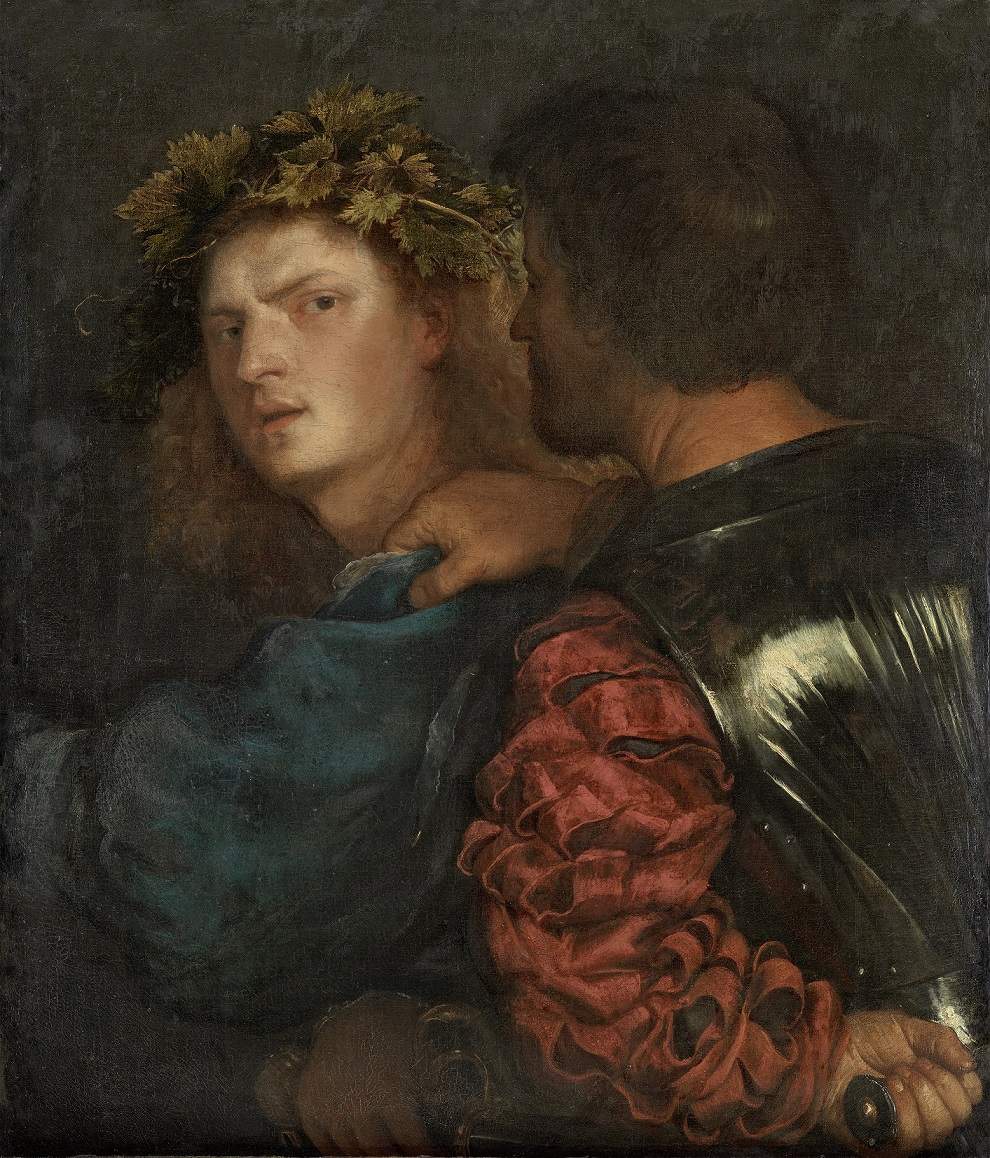An important work by Titian Vecellio (Pieve di Cadore, c. 1490 - Venice, 1576) is on its way from the Kunsthistorisches Museum in Vienna to the Gallerie dell’Accademia in Venice: it is the work known as Il Bravo, the loan of which enriches the Venetian museum after the inauguration of the new monumental halls dedicated to seventeenth- and eighteenth-century painting, which opened to the public last August 31. Titian’s Bravo is on display in Venice from Sept. 24 to Jan. 20, 2022: having entered the Austrian imperial collections in 1649, and returned exceptionally to Venice only in 1990, on the occasion of the exhibition dedicated to Titian at the Doge’s Palace, it will be on view again after 30 years in the casket of the Venetian school of painting. It will temporarily take the place of Giorgione’sVecchia, which leaves the Galleries to be displayed within the exhibition that the Viennese museum is dedicating, starting Oct. 5, to Titian(Titian’s Image of Women. Beauty - Love - Poetry).
The Bravo, an early work by the great painter from Cadore, datable to around 1515-1520, fits into the context of Room VIII of the Galleries, dedicated to Giorgione and his pupils, represented here in the early phase of their production: Titian with theArchangel Gabriel and Tobiolo and Sebastiano del Piombo with the organ doors of San Bartolomeo. Indeed, the reference to Giorgione is inescapable: the situation depicted in the Bravo (that of the entanglement between two figures, cropped at half-length and silhouetted against a dark background, framed at close range to solicit the direct participation of the viewer) derives from inventions by the master of Castelfranco (along the lines of the Vienna Warrior ), to whom the painting was repeatedly attributed from the mid-1600s until the end of the 19th century. However, Titian develops the situation in an original way by exploiting the dynamic and dramatic potential that the scene offers. Another significant fact, which relates Titian’s Viennese painting to Giorgione’s works in Room VIII, is its provenance from a distinguished city collection: in this case, it is not that of Gabriele Vendramin, which included the Old Woman, the Tempest and the Concert, but that of the brilliant lawyer and diplomat Giovanni Antonio Venier, owner of a prestigious collection that also included Raphael’s Saint Margaret and Giorgione’s Warrior, both of which are preserved today in the Kunsthistorisches Museum in Vienna. Being able to admire within the same environment the Bravo, the Tempest and the Concert thus represents, according to the museum, an extraordinary opportunity also to reflect on the collecting of Venetian patrician families in the early decades of the 16th century.
Titian’s painting, of the highest pictorial quality, has provoked much thought as to the possible interpretation of the subject depicted: a widely accepted hypothesis is that it depicts an episode from ancient history taken from Valerius Maximus’ Factorum et dictorum memorabilium, based on Plutarch’s Life of Marius, namely the assault and killing of the young soldier Trebonius by the tribune Caius Lusius. As suggested by the appearance of the young man and the presence of a wreath of vine leaves, the scene could also allude to the capture of Bacchus by Pentheus, king of Thebes, to prevent the spread of the Bacchic cult, as recounted in Euripides’ Bacchae and Ovid’s Metamorphoses. However, beyond the possible readings, the painting stands as an original and powerful creation with a complex compositional structure, a masterpiece of intertwining gazes, flickers of light and splashes of color that emphasize the psychological penetration of the tale.
In Titian’s work, two male figures face each other in the foreground: the one on the left is a young man with blond hair, with a garland of vine leaves on his head, looking at his assailant, whose face we do not see, only his profil perdu, in thick shadow. As Francesca Del Torre Scheuch, curator of Italian Renaissance painting at the Kunsthistorisches Museum in Vienna, notes, “the tension that accompanies the violent confrontation is strong and perceptible in the lively juxtaposition, including color, of the two figures. The viewer is directly involved as a witness to an impending attack. The violence is announced by the dagger in the attacker’s hand in the lower right corner and is transmitted through the bright red of the carved sleeve, onto the victim, whose face illuminated by a cold light stands out against the deep blue jacket.”
"The Bravo," notes the director of the Gallerie dell’Accademia, Giulio Manieri Elia; "was chosen because it weaves a rich web of dialogues, references and comparisons with the works in the permanent collection and with the artistic context of the lagoon city that generated it. The exceptional loan is a new opportunity for exchange with the Vienna Museum Institute, as part of an intense relationship of which the extraordinary loan of la Vecchia is a part." A significant milestone in this shared journey was the participation of the Kunsthistorisches in Vienna in the project A Masterpiece for Venice, created in 2020 in collaboration with Intesa Sanpaolo, which made it possible to admire Lorenzo Lotto’s splendid Sacra Conversazione in the halls of the Galleries, albeit unfortunately for only a few weeks due to the closures imposed by the continuing pandemic.
Image: Titian Vecellio, The Bravo (oil on canvas, 75 x 67 cm; Vienna, Kunsthistorisches Museum Gemäldegalerie inv. GG 64)
 |
| Venice, Titian's Bravo arrives at Gallerie dell'Accademia from Vienna after 30 years |
Warning: the translation into English of the original Italian article was created using automatic tools. We undertake to review all articles, but we do not guarantee the total absence of inaccuracies in the translation due to the program. You can find the original by clicking on the ITA button. If you find any mistake,please contact us.